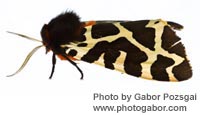 This page has been mothballed.
This page has been mothballed.
It is no longer being updated but we've left it here for reference.
New Landcover of Scotland
Contents
- New Image of Scotland Seminar, July 7th 1999
- About Land Cover of Scotland 1988
- LCS88 Questionnaire
- Outcomes of the LCS Workshop held at the Macaulay Land Use Research Institute 9/12/98:
- Steering Group for the new air photo phase
- Contact
"New Image of Scotland" Seminar at the Scottish Office, Victoria Quay, Edinburgh at 2pm on 7th of July.
The purpose of the seminar is to introduce Scottish Office personnel to the project, outline some of the key technical innovations and their potential benefits, and to present a costed business case for taking the project forward in the year 2000.The details of the seminar invitation can be viewed here, and we would encourage attendance by all interested parties.
Seminar Background
Over the past year a consortium comprising members of many Scottish Office departments and agencies have been exploring their common use of aerial photography to support a wide range of intelligence gathering and mapping projects via the Land Cover of Scotland Steering Group. This work has led to the view that aerial photography is a key shared resource and would benefit from improved management. Currently aerial photography is often difficult to obtain and is only available as photographic prints. The aim of the “New Image of Scotland” project is to remove these constraints using new digital technology. This will allow us to create an up-to-date high-resolution map-related image of the entire land area of Scotland. This will be easily accessed and available in digital form.
At the last Steering Group Meeting it was decided that in order to progress with the New Image of Scotland project (and thereby a new Land Cover of Scotland), support from within the Scottish Office was needed. The point had been reached where the technical specifications and potential business structures for an ortho-rectified image-base for the entire country had been determined. It was felt that without overt support for the project from within the Scottish Office the project cold not move forward. A briefing paper detailing a review of the technical options, the increased emphasis on the value of the aerial photography, the division of the path to a land cover map into 5 phases, the approximate costs and potential funding models was passed into the Scottish Office in April this year. This was positively received and enabled progression to a formal presentation of proposals through a seminar.
Further Information
- Seminar please contact Joyce Hunnam (Scottish Office) tel. 0131 244 1441, e-mail joyce.hunnam@scotland.gov.uk
- New Image of Scotland contact Dick Birnie (Macaulay Land Use Research Institute) tel. 01224 318611, e-mail r.birnie@macaulay.ac.uk
- Air Photography contact Diana Murray (RCAHMS) tel. 0131 662 1456, e-mail dianam@rcahms.gov.uk
Land Cover of Scotland 1988
LCS88 was the first national census of Scotland and provided baseline information on rural land cover at a scale of 1:25,000. The cover features were interpreted from aerial photographs and mapped onto the OS 1:25,000 pathfinder map series. The classification system was developed specifically to provide information on semi-natural cover features, so that the greatest detail (at the lowest level in the hierarchy) relates to natural and management features within these cover types. It was always intended that the 1988 LCS be used as a baseline for monitoring change and there are current projects at the MLURI investigating the best methods for this. Due to the advances in technology over the past decade, future LCS will be able to provide a series of other products along with an updated cover map.
Questionnaire
If you wish to download a Word 6 version of the LCS questionnaire to complete and return to us click here.
Workshop Outcomes
Steering Group
- The first Steering Group meeting covering the technical and managerial issues arising from the workshop was held on Monday 8 February 1999 at The Scottish Office, Pentland House, Edinburgh.
- The second Steering Group meeting was held on Monday 8 March 1999 at The Scottish Office, Pentland House, Edinburgh.
- The agenda for the meeting can be viewed here
- The minutes from the meeting can be viewed here
- The slides presented at the meeting were (in Word 6.0/95 format):
- The flow of products for the national AP archive (view in page layout mode)
- Schedule of costs
- The papers that were drafted for the meeting were (in Word 6.0/95 format):
Contact
If you have any comments about the New Land Cover of Scotland or would like further information please contact:Dr R Birnie
Land Use Change,
Macaulay Land Use Research Institute,
Aberdeen, AB15 8QH.
Tel. +44 (0) 1224 395000
Fax +44 (0) 1224 311556
e-mail: r.birnie@macaulay.ac.uk

